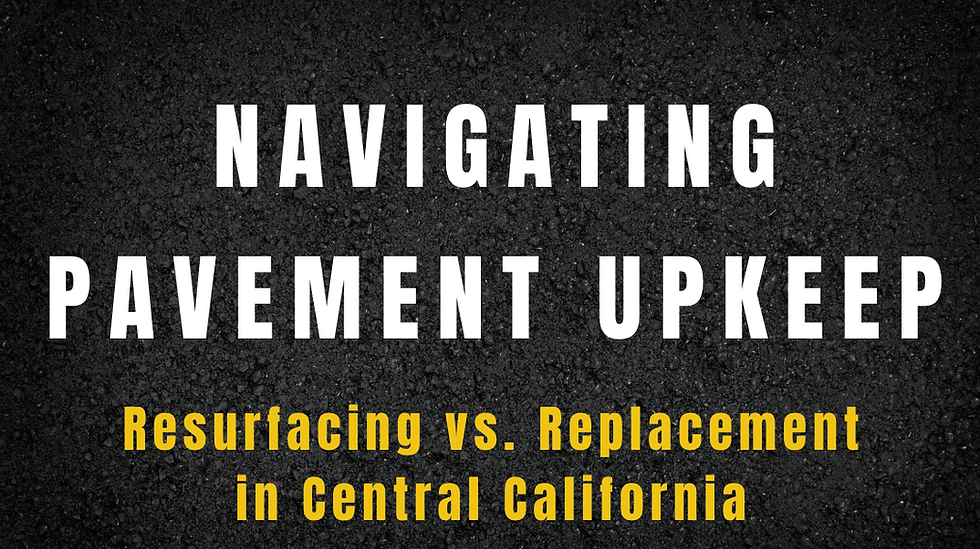Protect Your Pavement: Top 3 Strategies to Prevent Water Damage
- Central Coast Paving
- Dec 8, 2023
- 2 min read

Introduction
In the diverse climate of Central California, pavement is subjected to an array of elements that can lead to water damage. Be it a residential driveway or a commercial parking lot, the integrity of pavement can be compromised by water if not properly managed. As pavement specialists, we understand the critical nature of this issue and have compiled the top three strategies to prevent water damage and maintain the longevity of your pavement.
Strategic Water Damage Prevention for Pavement
Proper Installation and Grading
The first line of defense against water damage is ensuring that your pavement is correctly installed with the right grading. A slope of at least 1% (or 1/8 inch per foot) should be established to facilitate water runoff and prevent pooling on the surface. For larger pavements, incorporating a crown in the center can help direct water away from the middle and towards the edges, where it can be managed effectively.
Crack Sealing and Maintenance
Regularly inspect your pavement for cracks and seal them promptly. Cracks are the primary entry point for water that can cause serious damage through the freeze-thaw cycle. Use high-quality, flexible sealants that can expand and contract with temperature fluctuations to maintain an effective seal. For asphalt pavements, consider sealcoating as an additional protective layer that can repel water and protect the asphalt binder from oxidation and degradation.
Effective Drainage Systems
A well-designed drainage system is critical to prevent water accumulation and the subsequent damage it can cause. Ensure that catch basins and storm drains are clear of debris to prevent overflow and check that they are strategically placed to capture runoff effectively. Consider installing permeable pavement options in low-traffic areas, which allow water to percolate through the pavement and recharge the groundwater while reducing runoff.
Conclusion
Water damage to pavement can be a costly issue, but with proper design, regular maintenance, and effective drainage, it can be prevented. These strategies not only protect the structural integrity of your pavement but also save you from potential repair costs and extend the life of your investment. As the saying goes, an ounce of prevention is worth a pound of cure, and this is certainly true when it comes to maintaining your pavement in Central California.
Don’t let water undermine the quality of your pavement. Reach out to Central Coast Paving at (805) 665-3292 for a comprehensive pavement assessment and tailored solutions to keep your surfaces dry and damage-free.




Comments